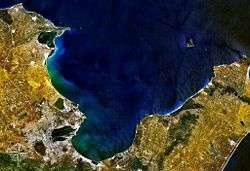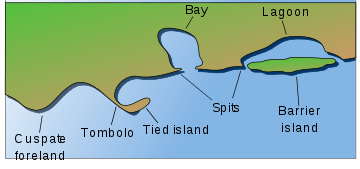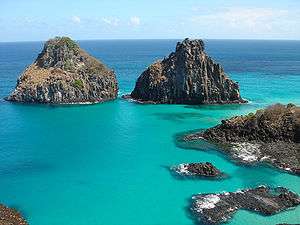Gulf
A gulf is a large inlet from the ocean into the landmass, typically with a narrower opening than a bay; though this is not observable in all geographic areas so named. The term gulf was traditionally used for large, highly indented, navigable bodies of salt water which are enclosed by the coastline.[1] Many gulfs are major shipping areas, such as the Persian Gulf, Gulf of Mexico, Gulf of Finland, and Gulf of Aden.[2]

Gulf of Tunis in Tunisia
See also
- List of gulfs – Wikipedia list article
References
- Gregory, George (1816). A Dictionary of Arts and Sciences. Volume 2 (First American ed.). Philadelphia: Isaac Peirce. p. 269. Retrieved 25 June 2020.
A sea is a smaller collection of waters; as the Black Sea. A gulf is a part of the sea which is nearly surrounded with land; as the gulf of Venice. A bay has a wider entrance than a gulf; as the Bay of Biscay. A strait is a narrow passage that joins.
- Duggal, Gita. Chowdhury, Baruna Ray (ed.). Madhubun ICSE Geography 6. New Delhi: Vikas Publishing House. p. 32. ISBN 9789325994645. Retrieved 25 June 2020.
A gulf is an inlet of an ocean or a sea deep into the land with a narrow mouth. It is more highly indented, more enclosed by the coast and larger than a bay. Some examples of gulfs are Persian Gulf, Gulf of Mexico, Gulf of Eden and Gulf of ...
External links

This article is issued from Wikipedia. The text is licensed under Creative Commons - Attribution - Sharealike. Additional terms may apply for the media files.

